They get everywhere….
https://youtu.be/CDNl4UeaErk
They get everywhere….
https://youtu.be/CDNl4UeaErk
Through a combination of accident and design, our Scottish journey intersected with several literary sites.
Our main target on the trip was the Cairngorms, at more or less the centre of which are the Pools of Dee:
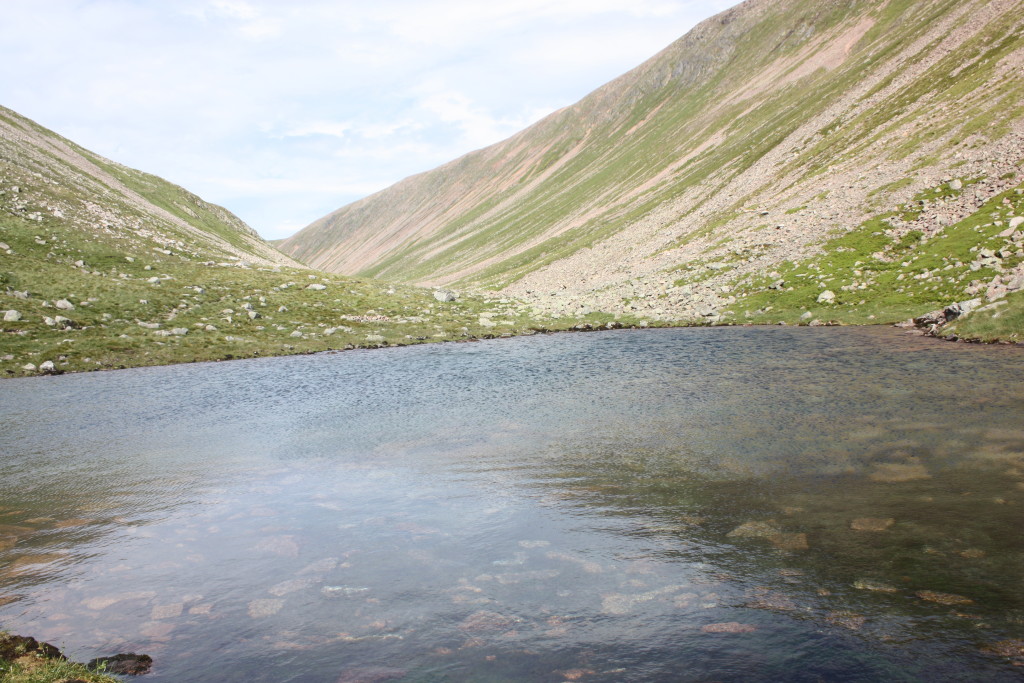 At the time I was reading over Volume 2 of Gladstone’s Homer and the Homeric Age, which I’ve just finished for Distributed Proofreaders. He was also keen to see the pools, as reported by Nan Shepherd in The Living Mountain:
At the time I was reading over Volume 2 of Gladstone’s Homer and the Homeric Age, which I’ve just finished for Distributed Proofreaders. He was also keen to see the pools, as reported by Nan Shepherd in The Living Mountain:
One of the truest hill-lovers I have known was old James Downie of Braemar, whose hand-shake (given with a ceremonial solemnity) sealed my first day on Ben MacDhui. Downie had once the task of guiding Gladstone to the Pools of Dee, which the statesman decided must be visited. Now the path to the Pools, from the Braemar end, is long though not rough, shut in except for the mountain sides of the Lairig Ghru itself; and the Pools lie beneath the summit of the Pass, so that to see the wide view open on to Speyside and the hills beyond, one must climb another half mile among boulders. Gladstone refused absolutely to stir a step beyond the Pools. And Downie, the paid guide, must stop there too; an injury which Downie, the hillman, never forgave. Resentment was still raw in his voice as he told me about it, forty years later.
The view Gladstone never saw:
On the way south, we passed through Dunkeld, where Gawin Douglas was bishop (some years after completing his version of the Æneid).
Scone features heavily in The Bruce and The Wallace, though little remains from those times. There is an interesting arboretum, with the original Douglas Fir, brought back by David Douglas, and some baby redwoods:
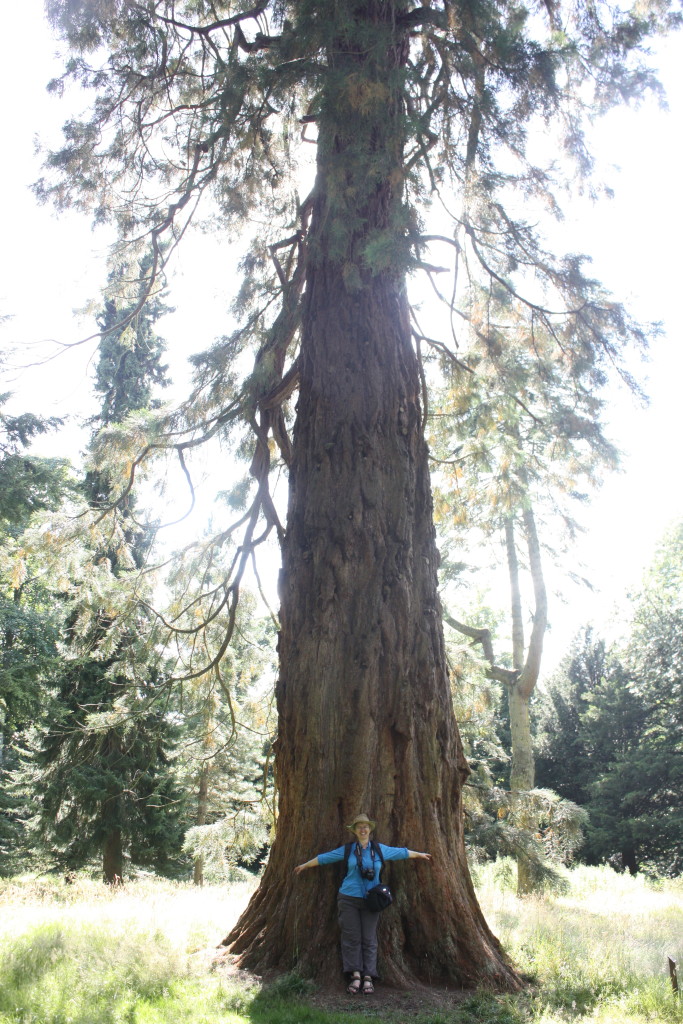 Another recent project, Scottish Poetry of the Sixteenth Century, was closely associated with Linlithgow palace. The Satyre of the Thrie Estaitis was performed in this hall:
Another recent project, Scottish Poetry of the Sixteenth Century, was closely associated with Linlithgow palace. The Satyre of the Thrie Estaitis was performed in this hall: 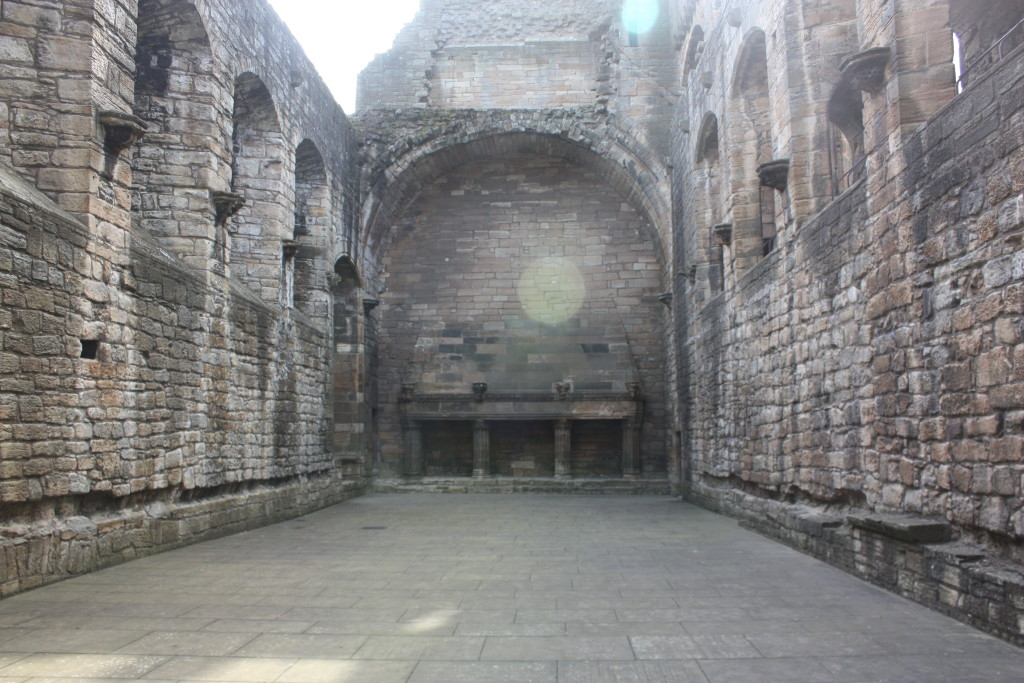
In Arbroath, a museum tells the story of the Bell Rock Lighthouse. There are models of the construction process:
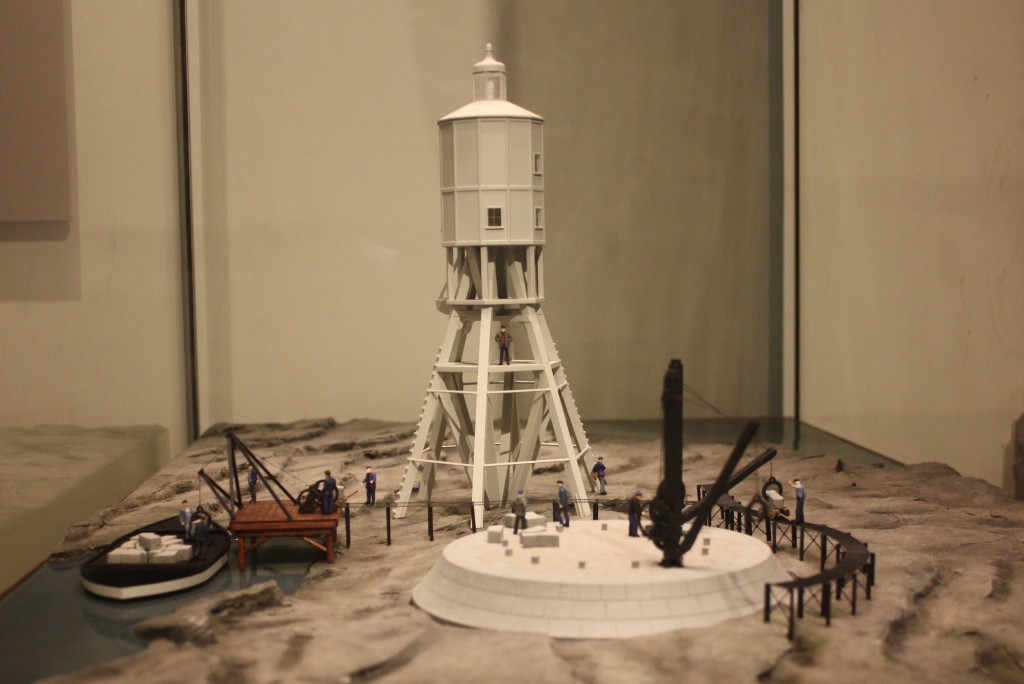 And an original text of Stevenson’s account. In the top-left of this page is Bassey, the horse which moved the stones which became the lighthouse:
And an original text of Stevenson’s account. In the top-left of this page is Bassey, the horse which moved the stones which became the lighthouse:
And in St Andrews, we visited her in the flesh (almost):
We started and finished in Edinburgh, which is clearly a city of Kultur:
Railways are always good value for comedy signs. Haymarket station must have a computer scientist in charge of its platform numbering:
While Scotrail are very considerate to those passengers with magnetic bottoms:
Sticking with the toilet theme, St Andrews University’s facilities are as socially inclusive as you might expect:
Sightseeing in the Cairngorms is strictly regulated too:
 (This is a thoroughly frivolous comment on an actually quite worthy, albeit currently broken, project.)
(This is a thoroughly frivolous comment on an actually quite worthy, albeit currently broken, project.)
There seems to be a recent tendency in the UK in particular for signage to err on the informal side:
St Michael’s Church in Linlithgow is also a bit chatty:
In Dunkeld and Linlithgow, I was clearly missing part of the story:
Bad English starts in Slovakia, and continues into Scotland:
Starting with the giants, we were buzzed by a magnificent grey heron at St Andrews:
The stars — unfortunately fairly unapproachable — were of course the ospreys. Odin the Magnificent at Loch Garten, in his favourite camera tree:
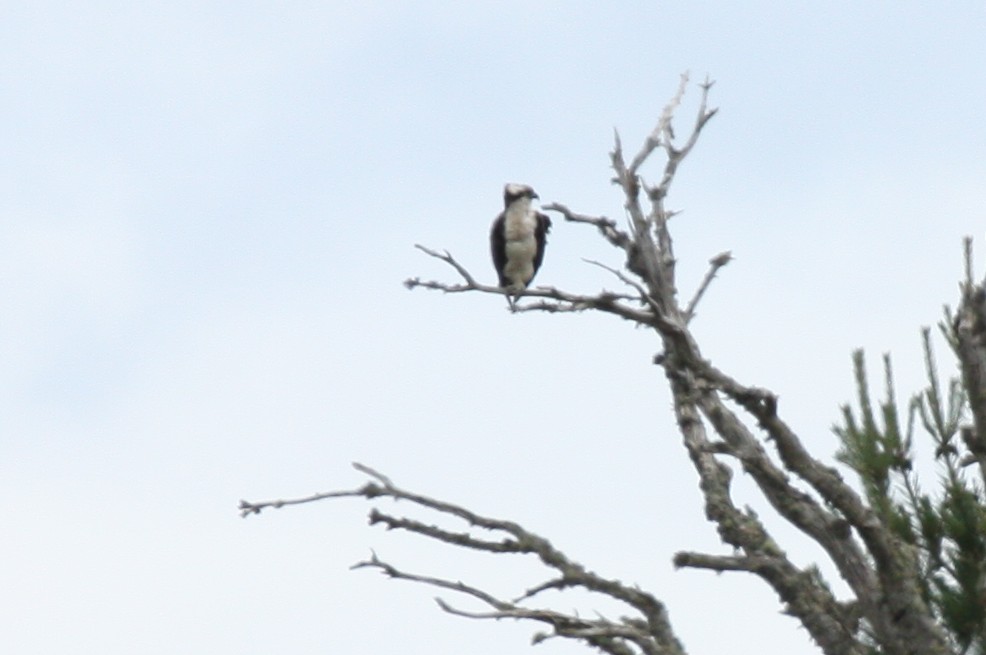 and the male osprey at Loch of the Lowes on Tayside:
and the male osprey at Loch of the Lowes on Tayside:
For the little ones, we cheated by staking out the bird feeders. Crested tit (on the right):
Greenfinch:
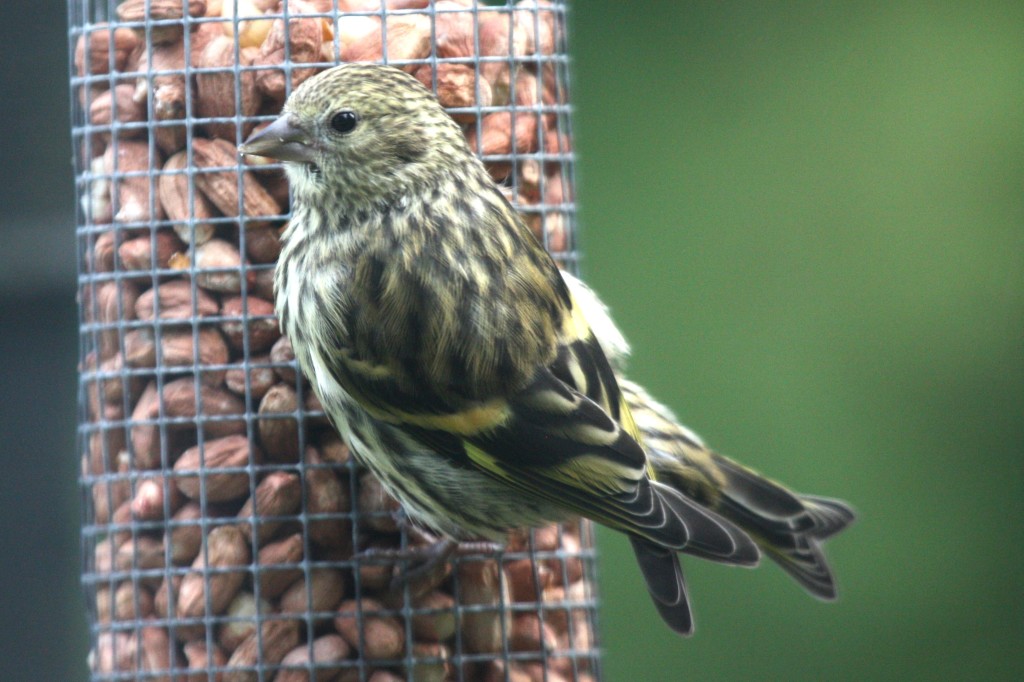 Female Great-spotted Woodpecker:
Female Great-spotted Woodpecker:
Some juveniles; a robin, and a yellow blue tit:
Two very different plovers. The dotterels are completely bizarre waders, preferring mountains (such as the Cairngorms) to the coast: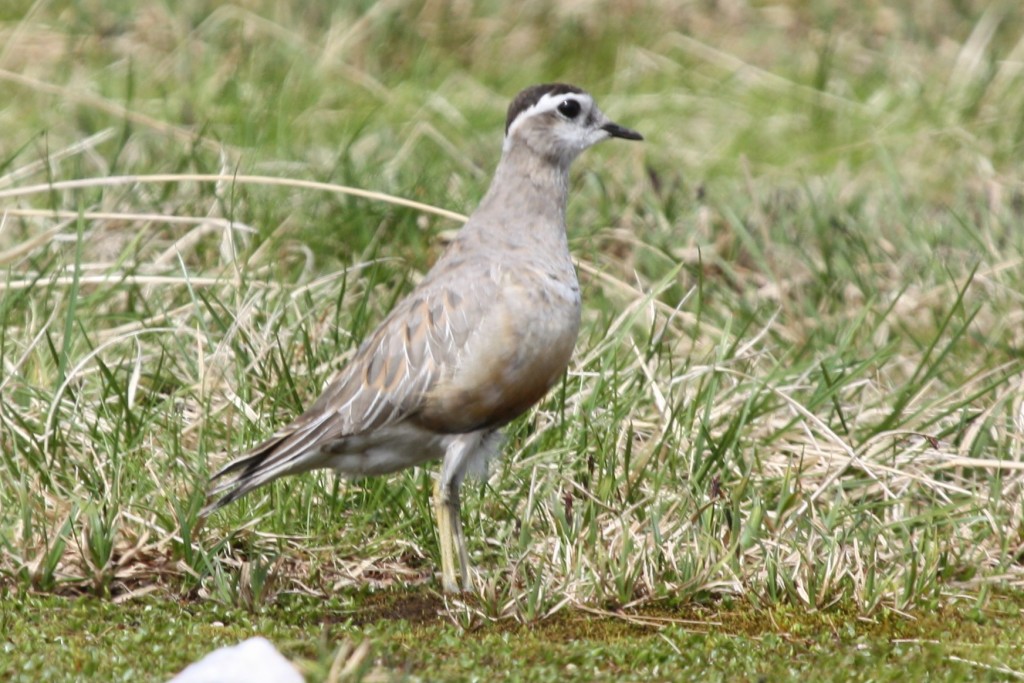
Weird in a different way are the lapwings, which we saw at Montrose: funky punky crests, iridescent colours, and outsize wings:
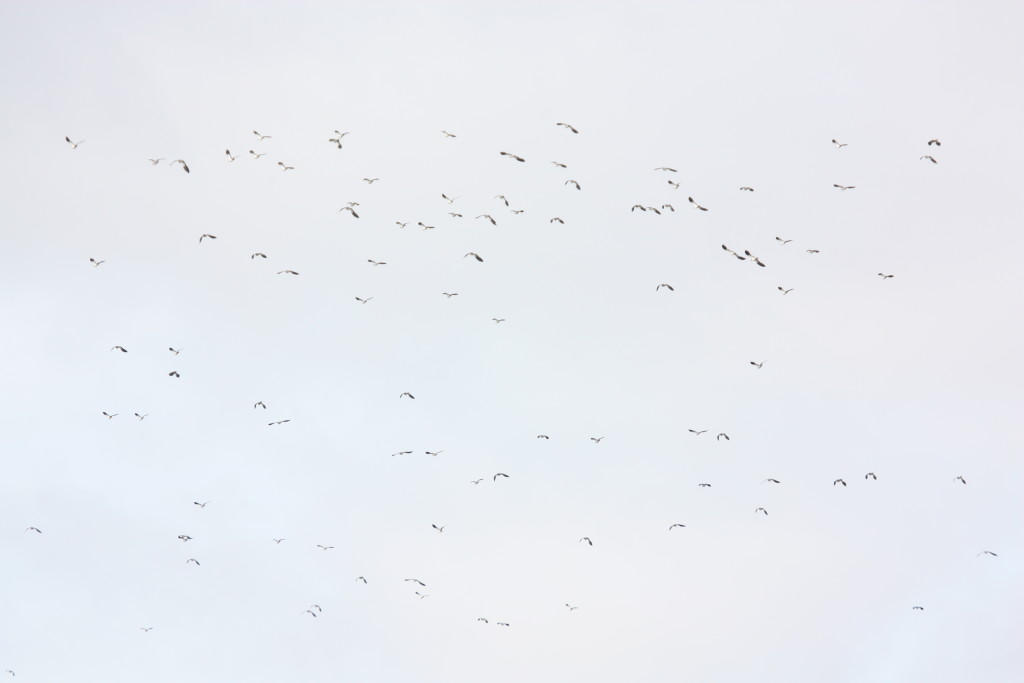 Linlithgow was home to some obviously pampered chickens:
Linlithgow was home to some obviously pampered chickens:
Gulls with itchy heads:
This week, The Wallace by Blind Harry, or Henry the Minstrel, was finally posted to Project Gutenberg. It took just under two years for it to work its way through the Distributed Proofreaders site, which is actually pretty good, given the content: I’m also near finishing a collection of 16th century Scottish poetry, and Douglas’ 1000-page version of The Æneid, both of which started their journeys in 2004.
Several months of those two years were taken up with my very slow final check of the book, which is when I actually read the thing for the first time. I probably should have read it before The Bruce, to understand the chronology better.
It’s a bit of a slog at times — lots of spattered brains — and not the most nuanced portrait, but it’s certainly energetic: Wallace liberates Scotland three times, defeats pirates twice, and slays just the one lion. I’m glad I finally got round to this one, so here’s to William and Harry.
Orange, white and blue kingfishers:
Red, blue, yellow and black Bee-eaters:
Green frog (and snake):
Black kite:
Miss Black:
I had some light relief recently polishing off this little book at DP. In less than 50 pages, we get the strange but true* story of how the author discovered the secret of eliminating nitts from an ancient, but unnaturally youthful negro in Jamaica; a bit of natural history:
A Bugg’s Body is shaped and shelled, and the Shell as transparent and finely striped as the most beautiful amphibious Turtle; has six Legs most exactly shaped, jointed and bristled as the Legs of a Crab. Its Neck and Head much resembles a Toad’s. On its Head are three Horns picqued and bristled; and at the end of their Nose they have a Sting sharper and much smaller than a Bee’s. The Use of their Horns is in Fight to assail their Enemies, or defend themselves. With the Sting they penetrate and wound our Skins, and then (tho’ the Wound is so small as to be almost imperceptible) they thence by Suction extract their most delicious Food, our Blood. This Sucking the Wound so given, is what we improperly call biting us.
Wild Buggs are watchful and cunning, and tho’ timorous of us, yet in fight one with another, are very fierce; I having often seen some (that I brought up from a day old, always inur’d to Light and Company) fight as eagerly as Dogs or Cocks, and sometimes one or both have died on the Spot.
and some handy advice:
If you have occasion to change Servants, let their Boxes, Trunks, &c. be well examin’d before carried into your Rooms, lest their coming from infected Houses should prove dangerous to yours.
But wait, there’s more! The author will sell you your own bottle of the liquor for a mere two shillings, or
Persons about taking Houses, Lodgings, or buying Furniture, paying for Surveying, shall be attended, and at first View be justly and truly inform’d if the Premisses be Buggy, or free from Buggs, by
JOHN SOUTHALL,
At the Green-posts in the Green-walk near Faulcon-stairs, Southwark.
Plus, there’s an advert for a book about chocolate.
Gorgeously illustrated, too:
*Story may not actually be true.
Much of our free time recently has been spend near the Morava and Danube, which have backwaters and lakes very popular with a range of species. The kings are of course the storks: over the past week, we’ve seen the number of chicks on the nest go from six, to four, to two, and then:
Now the youngest one has also taken flight, and the family are exploring the world around them. They still come back to the nest for feeding time, which is more chaotic than ever:
There are also plenty of grey herons about–fishing, or just hanging:
Buzzards:
and black kites soar above the Danube:
Domestic bliss on a smaller scale was on view with the collared doves:
This miscellaneous little brown bird was not so relaxed when I turned up:
In the water, snakes wait for passing meals:
Above it, kingfishers tackle fish bigger than their heads:
Damselflies are still busy socialising:
But sometimes all you need is a long, cool drink:
45 books finished in the first half of the year. I’d roughly divide them into:
Quarantine — Jim Crace
All That I Am — Anna Funder
The Inn at the Edge of the World — Alice Thomas Ellis
The Bone Clocks — David Mitchell
Vacant Possession — Hilary Mantel
Orfeo — Richard Powers
The Last Treasure Hunt — Jane Alexander
Billy Lynn’s Long Half-time Walk — Ben Fountain
Rites of Passage — William Golding
History of the Rain — Niall Williams
When They Lay Bare — Andrew Greig
A Perfectly Good Family — Lionel Shriver
The Guest Cat — Takashi Hiraide
The Dying Animal — Philip Roth
Of these, All That I Am was staggeringly good in both style and content: “The sky was pale as a cup” is a pretty much perfect description of an English summer. Orfeo and Billy Lynn’s Long Half-time Walk were fascinating as representatives of a pyrotechnic writing style — enjoyable, and very American (in a good way). Of course The Last Treasure Hunt was also splendid. 🙂 On the other hand, The Bone Clocks was a huge disappointment, and The Dying Animal … tells you a lot about the writer.
Christine Falls — Benjamin Black
The Death of Bunny Munro — Nick Cave
The Death of Bunny Munro was interesting preparation for our Brighton trip.
London’s Overthrow — China Mieville
Bad Pharma — Ben Goldacre
The Living Mountain — Nan Shepherd
Empire of the Sun — J. G. Ballard
To a Mountain in Tibet — Colin Thubron
Corvus — Esther Woolfson
Bad Pharma was shocking, even for someone who started out from the premiss that the medical industry is the enemy. I’d avoided Empire of the Sun for a long time because of the film, but the book was brilliant, particularly on the period after the war had ended.
Corvus was a revelation: funny and moving in approximately equal measure, it sent me outside to watch our local corvids. All the time I was living in Queen’s Road, I never knew there was a bonkers lady round the corner with an enchanting perspective on living with black and black-and-white companions.
Helliconia Spring — Brian Aldiss
Helliconia Summer — Brian Aldiss
Helliconia Autumn — Brian Aldiss
Acceptance — Jeff VanderMeer
Feersum Endjinn — Iain M. Banks
The Algebraist — Iain M. Banks
The Drought — J. G. Ballard
On the Steel Breeze — Alastair Reynolds
Ancillary Justice — Ann Leckie
Neuromancer — William Gibson
The Pastel City — M. John Harrison
Neptune’s Brood — Charles Stross
and for my inner child:
Howl’s Moving Castle — Diana Wynne Jones
Deep Secret — Diana Wynne Jones
Coraline — Neil Gaiman
Acceptance, the conclusion of the Southern Reach trilogy, stood out here for its combination of the bizarre and the understated: a stand-out moment was in the second volume, where the protagonist enters a small room; discovers how mad one of his colleagues is; realises that the colleague is curled up on a shelf behind him; and leaves quietly. The Algebraist I thought was one of the best Banks books I’ve read so far, neatly balancing the humour, world-building and story-telling. Neptune’s Brood is pitched mid-way between Banks and M. John Harrison’s Light series, featuring zombies in space, a Buchhaltung Historiker hero, and a ship of pirate-underwriter-flying-foxes.
The Radetzky March — Joseph Roth
Relations — Zsigmond Móricz
The Pendragon Legend — Antal Szerb
Messaging — George Woolard
“The Scottish Approach” to EFL teaching — all work and no play. Perfect.
An Account of the Bell Rock Light-house — Robert Stevenson
Picture writing of the American Indian — Garrick Mallery
A Desk-Book of Errors in English — Frank H. Vizetelly
A Year at the Shore — Philip Henry Gosse
An Account of the Bell Rock Light-house, along with Nan Shepherd, provided me with a plan for the summer holiday. Picture writing of the American Indian is almost 1000 pages of pictures and their descriptions; comparisons allowed the author to roam over every inhabited continent, which he was very happy to do.
Wallace is nearly done, though it’s harder going than The Bruce, while Gladstone volume 2 is well-advanced at DP, so I hope to have finished reading that by the end of the year. Other big ones I’d like to finally finish: Finnegans Wake (or at least Stephen Hero); Der Mann Ohne Eigenschaften; On What Matters; something in Slovak. Let’s see what happens.